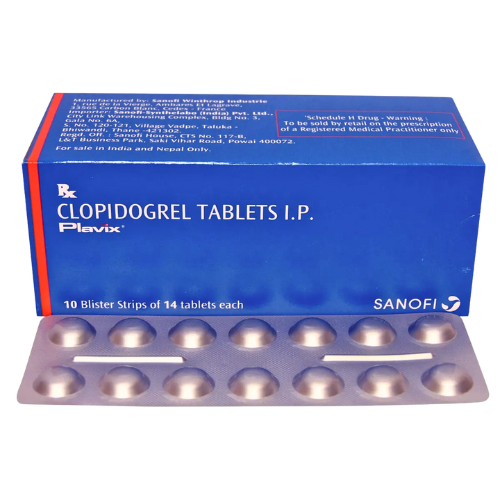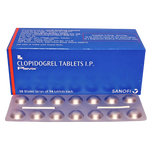PLAVIX (Clopidogrel)
Reliable shipping
Flexible returns


PLAVIX (Clopidogrel) is an antiplatelet medication primarily used to reduce the risk of heart attack and stroke in individuals with cardiovascular conditions. It works by inhibiting platelet aggregation, thereby preventing blood clots from forming in the arteries.
Key highlights of PLAVIX include:
- Indications: PLAVIX is commonly prescribed for patients who have experienced a recent heart attack, stroke, or have peripheral arterial disease. It is also used in combination with aspirin for patients undergoing percutaneous coronary intervention (PCI).
- Mechanism of Action: The active ingredient, Clopidogrel, is a prodrug that requires metabolic activation. Once activated, it irreversibly binds to the P2Y12 ADP receptor on platelets, inhibiting their activation and aggregation.
- Dosage and Administration: The typical starting dose is 75 mg once daily. It can be taken with or without food, and it's crucial for patients to follow their healthcare provider’s instructions regarding dosage.
- Side Effects: Common side effects may include bleeding, bruising, and gastrointestinal issues. Serious side effects can occur, such as severe bleeding or allergic reactions, necessitating immediate medical attention.
- Drug Interactions: PLAVIX may interact with certain medications, including proton pump inhibitors, NSAIDs, and other anticoagulants. Patients should inform their healthcare provider of all medications they are taking.
- Warnings: It is important for patients to inform their doctors about any history of bleeding disorders or liver problems. PLAVIX should be used with caution in patients undergoing surgical procedures.
- Monitoring: Regular monitoring of blood counts and liver function tests may be necessary to ensure safety and efficacy during treatment.
PLAVIX has a significant role in the management of cardiovascular diseases, making it essential for many patients at risk of thrombotic events. Always consult with a healthcare provider for personalized advice and treatment plans.
- Clopidogrel bisulfate
- Microcrystalline cellulose
- Magnesium stearate
- Hydroxypropyl cellulose
- Colloidal silicon dioxide
- Film-coating (hypromellose, titanium dioxide, polyethylene glycol)
```
PLAVIX, containing the active ingredient clopidogrel, is a medication used to prevent blood clots in patients at risk for heart attack and stroke. To use PLAVIX effectively, follow these guidelines:
- Consult Your Doctor: Before starting PLAVIX, discuss your medical history with your healthcare provider, including any allergies, current medications, or medical conditions.
- Dosage Instructions: Take PLAVIX exactly as prescribed by your doctor. The typical dosage is one 75 mg tablet taken once daily. Do not adjust your dose without consulting your healthcare provider.
- Administration: You can take PLAVIX with or without food. Swallow the tablet whole with a glass of water. Do not crush or chew the tablet, as this can affect its effectiveness.
- Missed Dose: If you forget a dose, take it as soon as you remember. If it is almost time for your next dose, skip the missed dose and resume your regular schedule. Do not double up on doses.
- Side Effects: Be aware of potential side effects such as bleeding, bruising, or gastrointestinal issues. If you experience severe side effects or signs of an allergic reaction, seek medical attention immediately.
- Drug Interactions: Inform your doctor of all medications and supplements you are taking, as certain drugs may interact with PLAVIX, increasing the risk of bleeding.
- Regular Monitoring: Attend regular check-ups and blood tests as advised by your healthcare provider to monitor your response to the medication.
- Discontinuation: Do not stop taking PLAVIX without consulting your doctor, as this may increase the risk of a cardiovascular event.
By following these instructions and maintaining open communication with your healthcare provider, you can use PLAVIX safely and effectively to manage your cardiovascular health.